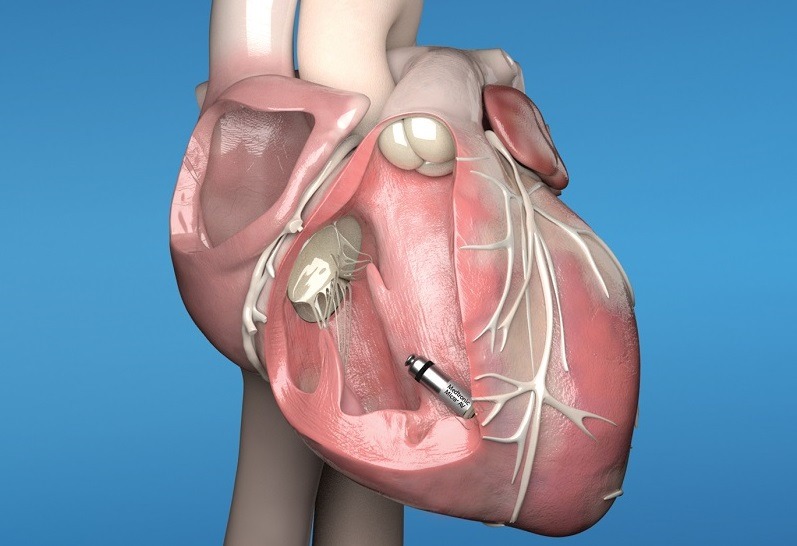 Medtronic has announced new data from the Micra Coverage with Evidence Development (CED) study, which showed the Micra transcatheter pacing system (TPS) was associated with a 38% reduction in reinterventions and a 31% reduction in chronic complications at two years compared with traditional transvenous (TV-VVI) pacemakers. The data were presented in a late-breaking trials presentation at the European Society of Cardiology’s 2021 congress (ESC 2021, 27–30 August, virtual).
Medtronic has announced new data from the Micra Coverage with Evidence Development (CED) study, which showed the Micra transcatheter pacing system (TPS) was associated with a 38% reduction in reinterventions and a 31% reduction in chronic complications at two years compared with traditional transvenous (TV-VVI) pacemakers. The data were presented in a late-breaking trials presentation at the European Society of Cardiology’s 2021 congress (ESC 2021, 27–30 August, virtual).
“There is considerable evidence supporting the safety and efficacy of leadless pacemakers, but limited data evaluating their long-term outcomes compared to traditional pacemakers in a real-world setting,” said Jonathan P Piccini, associate professor of medicine and director of cardiac electrophysiology at Duke University Medical Center, Durham, USA. “The results from this study further support the connection of a lower risk of complications with leadless pacing compared with traditional transvenous single chamber pacing. These data should help guide physicians as they determine the best pacing options for their patients.”
The Micra CED study is a continuously enrolling, observational, cohort study evaluating claims-based complications, utilisation and outcomes of Micra TPS in the US Medicare fee-for-service population. It is the first study to use Centers for Medicare & Medicaid Services (CMS) administrative claims data to evaluate clinical outcomes of leadless pacing in the real-world setting and compare outcomes to a contemporaneous cohort of patients implanted with transvenous-VVI pacemakers.
The CED study used statistical adjustment to account for differences in patient characteristics at baseline. Although Micra patients had more co-morbidities than transvenous VVI patients, the adjusted results showed patients with Micra had significantly fewer reinterventions compared to patients with TV-VVI devices (Micra 3.1% vs. TV-VVI 4.9%; adj. p=0.003) including significantly fewer system revisions, device removals, and upgrades to cardiac resynchronisation therapy. Micra TPS patients also had significantly fewer chronic complications at two years (Micra 4.6% vs TV-VVI 6.5%; adj. HR 0.69, 95% CI: 0.60-0.81, P<0.0001). Although Micra patients had more comorbidities than transvenous-VVI patients, there was no difference in adjusted all-cause mortality at two years compared to the transvenous comparator population (adj. HR 0.97, 95% CI 0.91-1.04, P=0.37).
Researchers evaluated 6,219 patients implanted with Micra VR TPS and 10,212 patients implanted with traditional TV-VVI pacemakers; they compared system reinterventions, chronic complications, and all-cause mortality at two years after implant. Overall, patients implanted with Micra TPS were sicker (with a greater comorbidity burden) than TV-VVI patients, with higher rates of end stage renal disease (ESRD) (12.0% vs. 2.3%) and renal dysfunction (48.8% vs. 42.1%), and a higher Charlson Comorbidity Index score (5.1 vs. 4.6).
“As part of our commitment to improving outcomes for patients needing pacing therapy, we embraced the opportunity to evaluate our devices in a real-world setting,” said Rob Kowal, chief medical officer of the Cardiac Rhythm Management business, which is part of the Cardiovascular Portfolio at Medtronic. “The results presented at ESC further reinforce the significant advantages of leadless pacemakers and support earlier findings that show a reduced risk of complications with Micra TPS. These data should assist physicians and patients to select the most appropriate, individualized pacing option to meet their goals.”












